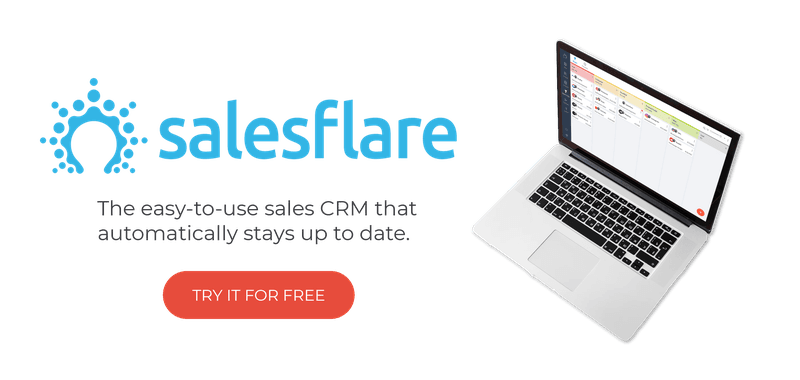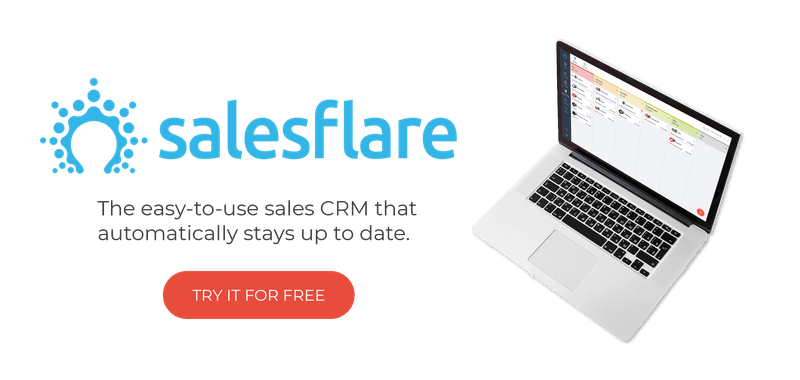How to Create a Content Calendar – Full Guide
Content Marketing Masterclass: Part Four
If this is the fourth part you’re reading, you are clearly on a content marketing roll: whipping up a content strategy, coming up with all those juicy content ideas. Time to get organized and move your ideas onto a neat content calendar. All 6,357 of them. 🙄
Overwhelmed by the gazillion ideas you’ve come up with? Don’t know where to start on the blank Google Sheet you’re staring at? No worries: in this blogpost, you’ll discover how to structure your content and optimize your content schedule.
Plan your work and work your plan is your new mantra!
This post is Part Four in a brand spanking new Masterclass Series on Content Marketing. We believe it’s an incredibly important topic – and according to a little survey we did, you do too. Trouble is: there is so much content on content marketing out there (talk about meta) and a lot of the intel is conflicting.
We bring this Masterclass to you in partnership with Anouck Meier, Chief Storytelling Officer at Ampersand. Anouck is a conversion copywriter and a content marketing strategist who has worked with numerous brands, big and small, to help them achieve their business goals through strategic content. Let’s get the story on content straight once and for all in a comprehensive guide. Ready to dive in?
– Jeroen Corthout, Co-Founder Salesflare, an easy-to-use sales CRM for small B2B companies

What is a Content Calendar?
A content calendar (also referred to as a “marketing calendar”, “blog calendar”, “social media calendar” or “editorial calendar”) can be anything you use to plan, schedule and organize content on a weekly, monthly or yearly basis.
Usually it takes the shape of a visual workflow (in technicolor, if you’re anything like me).
It helps you keep track of topics, content types, channels, team members and – last but not least – deadlines.
Usually, a content calendar comes in one of three forms:
- Printed calendar. For those old-school lovers of all things paper. 🗓
- Spreadsheets. If you know your way around a Google Sheet, it can be a very cost-effective way to organize your content.
- Apps. From project management tools like Asana or Trello to bespoke content management tools like CoSchedule or Smarterqueue: there are tons of apps you can use as content calendars.
That myriad of post-its with random ideas sticking on your monitor? Not a content calendar, I’m afraid.

Questions to consider before starting a Content Calendar
Are you already experiencing mild choice stress symptoms about what type of calendar to choose?
Let me relieve some FOMO by providing a very comforting suggestion to make your choice easier: it depends. (See, my former career as a lawyer comes back to haunt me sometimes. And now you’re affected too.)
Now for some more helpful input – here are some things to consider before embarking on your content calendar adventure:
- How many channels and platforms are you managing? Is it just a blog and a Facebook page? Or are you consistently promoting your content on a vast array of media and platforms?
- How frequently are you publishing content? Are you posting on a daily basis? Multiple times a day? Maybe just once a week? Trace back your steps and try to get a clear overview. This will help you determine how to best visualize your content calendar on a regular basis.
- Do you create more than one type of content? Are you uploading podcasts to iTunes and simultaneously publishing articles on your blog? Then your content calendar will need to be able to distinguish between the two.
- Is it just you using your content calendar or is it an entire team? Maybe you have a system that makes perfect sense to you, but as soon as you start collaborating on content, it needs to work for others too. The best content calendars will allow you and your team members to streamline your efforts.
- What is your content process? How complex is it? How long is your content pipeline? Is there a substantial editing, review or approval process that each piece of content goes through? Make sure your calendar can distinguish between similar assignments that are in different stages of creation.
But Wait a Minute – Why Do I Need a Content Calendar in the First Place?
I know by this stage you may be wondering: “Why can’t I just pick a new idea from my endless list of content ideas every day and see what happens? What’s wrong with winging it?”.
Choosing a content calendar over a “winging it strategy” comes with a slew of benefits:
- Get a 50,000-foot view of your content. Create a clear visual of how your content is distributed throughout the year in terms of timing, themes, formats, etc. Blog posts, social posts, email newsletters, podcasts, videos—whatever you’re busy creating, you’ll see it all in one place.
- Hit deadlines more easily and hold yourself (and your team) accountable for getting things done. Have your content ready in time so you’re not scrambling to get posts together last minute (‘cause we all know how well that usually works out for us).
- Execute on that content strategy. There is no way you can implement your strategy and hit those goals if you’re just posting randomly every day. A calendar keeps you on track.
- Keep your audience engaged by preventing your content from stagnating or getting repetitive.
- Get everyone on the same page. Inform everyone about what is being published, when and where and avoid unpleasant surprises or – heaven forbid – duplicate efforts.
- Spot content gaps. Gain a sense of what content still needs to be created and do so with plenty of time to line it all up.
- Plan much farther ahead. Using a content calendar makes it easier to plan out your future content efforts. That could mean a week, a month, or however far ahead you’d like to plan. It just feels incredibly comfortable to sit back, relax and watch your content do the work.

No matter how dear you hold your reputation as a spontaneous creative, you know deep inside that working out of 20 browser tabs, a couple of legal pads and a collection of post-its, is just not the way to go.
Without a plan, you’ll end up wasting time and you’ll be less likely to succeed. When your entire strategy is planned out on one calendar, it’s way easier to keep organized, focus on deadlines, and be more productive.
How to Plan Content On Your Calendar in 8 Simple Steps
Now that we’ve got all that out of the way: how do you go about creating a content calendar that fits your needs?
1. Start with a content audit
There’s a lot of focus on creating new content when you should really be focusing on creating more with less and using what you’ve already got.
No, you don’t need to produce all content from scratch. Or start creating a million pieces of content right away.
Instead, have a look at the heaps of valuable content just lying around the office. Start taking stock of all your existing content assets and resources to see what you can put into the content (re)mix.
Don’t just consider the obvious assets like existing blog posts, but dig a little deeper.
Gather whitepapers, reports, first-hand data or research, notes from meetings or trainings, slide decks and presentations. Ask team members what they still have lying around in their (virtual) cupboards. You’ll be surprised what you can come up with.
Consider if any of the content you plan needs updating or revamping. Also, have a look at what types of content have performed well in the past and what sorts of things your competitors are posting.

2. Audit your platforms too
As you’re auditing your content, you may also want to take a look at your current efforts on each channel.
Some questions to ask yourself:
- What platforms are you using?
- Which ones are performing the best?
- Should you continue publishing to all of them?
- How many times a day are you currently posting to each platform?
- What are the goals for each platform?
- Who is responsible for each channel?
This is all useful information to include in your social media calendar, especially if you work on a team.
As you’ll be mapping out your content per platform, remember that you should be posting content that is tailored to each platform and its unique audience. Never just cross-post your content without adapting it to the specific requirements and characteristics of the platform.
3. What’s the frequency?
Don’t just ask Kenneth. From doing your audit, you’ll have a clear view on how often you’re currently posting. Will that be the plan going forward? Or do you need to amp up your efforts?
Either way, your posting frequency will determine how many slots you need to leave open per channel or platform. Make sure you have room for both your weekly blogs or podcasts and your daily posts on Facebook and your tweets.

4. Come up with Categories for your content
Your content calendar should have some sort of content categorization system. This has tons of advantages.
Not only will it help you track what kind of content gets the most reach and engagement, it will also make it easier to keep things fresh and varied for your audience.
- You can decide for yourself what types of categories will be most useful to you. One option is to divide it into mediums, such as videos, tutorial videos, blog posts, tutorials, infographics, Instagram stories, etc.
- Another option is to categorize content according to the nature of the content, i.e. curated, user-generated, sponsored, self-promotional, etc.
- I personally like to categorize content into themes too – this helps to see whether my content mix includes all the themes I’d like to cover in my content. Some of the labels I use for my own content are: conversion copy, storytelling, blogging, content marketing, e-mail marketing, freelance life and fun.
Whatever you choose, make sure the labels are descriptive and actually helpful (although that may take some time to determine). You can also use more than one label, for instance “blog post” + “content marketing” + “sponsored”.
5. Set up a content database
A content database is, well, just what it sounds like: a central place to store all the pieces of content you may want to choose from when filling out your content calendar. It can be as simple as a (set of) spreadsheets , or you can use an app like Asana or Evernote to take stock.
Make sure to include at least the following for each piece of content:
- Title
- Content type (blog post, video, infographic,…)
- Link
- Expiry date (or indication of evergreen nature)
- Image
- Category
I recommend including space for comments and for interesting excerpts from the piece of content. This will help you when collaborating and coming up with the actual copy for your posts.

6. Input your content (at last!)
Hurray – after all that prep work, you’re finally ready to start filling up your content calendar! 🎉
If you’re using something like a Google Sheet (which can be all you need!), here are some basic items to include:
- Platform or channel
- Date
- Time
- Link (if applicable)
- Copy
- Image
If you’re using a content planning tool, like Hootsuite or CoSchedule, this will pretty much be self-explanatory.
7. Get your team organized
Decide on clearly defined roles for everyone on the team:
- Who is responsible for updating the calendar?
- Who will publish the posts?
- Will you assign writing the copy to a copywriter?
- Who will source the images?
- Do the posts need approval before going live? By whom?
- Who needs access to the calendar? Who gets what kind of permission?
- How far in advance will you schedule content?
- What’s the process for coming up with new content ideas?
These are just some of the questions you’ll need to address to ensure maximum organization and flow.
Even if it’s just you, it will pay off setting up a lean process and documenting it. As soon as your team grows, you’ll have a ready-to-go manual ready for use and you can delegate away!
Depending on your company’s size, there may also be value in sharing your content calendar with a few other teams who would benefit from knowing what you’re up to. Consider sharing your calendar with copywriters, video producers, designers, project managers and even clients.

Remember to put regular editorial planning meetings on the calendar well before the next publishing period. Use the meeting to schedule the content from your database and to come up with fresh ideas.
Your planning meetings can also be used to review the reach, engagement and other stats from previous periods to assess which types of content are most successful and which are less successful didn’t quite hit the mark.
Analytics and revenue data can also be used to make tweaks to already published content (e.g. titles, introductions, SEO data, outbound links, etc.) to optimize visits and engagement.
8. Schedule your content for publishing
You’ve got your calendar up and running: time for a celebratory dance around (or on) the table!
There is one final step to take: actually publishing your content.
If you don’t have a lot of platforms to manage or huge volumes of posts to publish, you may get by by manually hitting “send” or “publish”. If you’re only using Facebook, for example, you can just use the platform’s native publishing tool to get your posts published.
If, however, you’re juggling several social media accounts and other publication platforms, a content planning app can save you oodles of time and money (and help preserve your will to live). 🙄
Some of the most popular content planning apps include:
Most of these offer free trials for at least a short period of time, so do experiment to see what best fits your needs.
Final Tips for Content Calendar Success
Whether you plan your content on a weekly, monthly or quarterly basis, there are several universal keys to content calendar success:
- Iterate all.the.time. A content calendar is a living, breathing thing, and it should change and grow as you and your content needs do.
- Experiment, analyze, repeat. Experiment and research elements like the best times to schedule your content, which platforms work best for your audience etc. Content marketing is a process, it doesn’t stop after hitting the publish button or putting a post on your schedule.
- There’s no one right way to calendar your content. There are a million different methods, templates and approaches to take. Play around, try new things regularly and modify as needed. Maybe even have a little fun along the way.
How do you usually organize your content ideas? Let us know in the comments.
And don’t forget to check back next week for Part Five of our Content Marketing Masterclass about creating the content marked on your calendar!

We hope you liked this post. If you did, spread the word!
👉 You can follow @salesflare on Twitter, Facebook and LinkedIn.
- Measuring Content Marketing ROI: Show Me The Money - October 10, 2019
- Repurposing Content: 4 Easy Ways to Get More Out of Your Content - October 3, 2019
- The Ten Commandments of Effective Content Distribution - September 26, 2019
